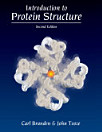Bioinformatics and Functional Genomics
Jonathan Pevsner
ફેબ્રુ 2005 · John Wiley & Sons
ઇ-પુસ્તક
792
પેજ
reportરેટિંગ અને રિવ્યૂ ચકાસેલા નથી વધુ જાણો
આ ઇ-પુસ્તક વિશે
"Introduction to Bioinformatics" ist eine breit angelegte Einführung in die Bioinformatik.
Der Band gliedert sich in drei Abschnitte zu biologischen Sequenzdaten, kompletten Genomen und bioinformatischen Ansätzen zur Problemlösung bei der Sequenzanalyse, Microarrays und Krankheiten des Menschen.
Erfahrung im Umgang mit rechnergestützten Methoden wird nicht vorausgesetzt.
"Introduction to Bioinformatics" kombiniert Theorie und praktische Anwendung in einem ausgewogenen Verhältnis.
Jedes Kapitel enthält Problemstellungen, Computeraufgaben, Software Pakete, Web Links und einen praktischen "How To"-Abschnitt, der genau erklärt, wie man frei zugängliche Software nutzen kann.
Der Band erläutert darüber hinaus auch die Schwachstellen der verschiedenen Ansätze.
Mit drei ausführlichen Beispielen.
Mit einem Glossar.
Mit einem Lösungsteil zu den Problemstellungen.
Mit einer Bibliographie weiterführender Literatur.
Der Band gliedert sich in drei Abschnitte zu biologischen Sequenzdaten, kompletten Genomen und bioinformatischen Ansätzen zur Problemlösung bei der Sequenzanalyse, Microarrays und Krankheiten des Menschen.
Erfahrung im Umgang mit rechnergestützten Methoden wird nicht vorausgesetzt.
"Introduction to Bioinformatics" kombiniert Theorie und praktische Anwendung in einem ausgewogenen Verhältnis.
Jedes Kapitel enthält Problemstellungen, Computeraufgaben, Software Pakete, Web Links und einen praktischen "How To"-Abschnitt, der genau erklärt, wie man frei zugängliche Software nutzen kann.
Der Band erläutert darüber hinaus auch die Schwachstellen der verschiedenen Ansätze.
Mit drei ausführlichen Beispielen.
Mit einem Glossar.
Mit einem Lösungsteil zu den Problemstellungen.
Mit einer Bibliographie weiterführender Literatur.
લેખક વિશે
Jonathan Pevsner received his Ph.D. in Pharmacology and Molecular Sciences at the Johns Hopkins School of Medicine (1989). There, he identified an odorant-binding protein in nasal secretions. He completed postdoctoral training as a Helen Hay Whitney fellow in the Department of Molecular Physiology at the Stanford University Medical Center. At Stanford he identified proteins that function in neurotransmitter release at nerve terminals. In 1995 he joined the faculty in the Department of Neurology at the Kennedy Krieger Institute and the Department of Neuroscience at the Johns Hopkins School of Medicine. He began teaching bioinformatics in 1996, and introduced a ten-week course in 2000. In 2001 the graduate students voted him Teacher of the Year, and in 2003 the Johns Hopkins faculty gave him the Professor’s Award for Excellence in Teaching. His lab studies the molecular basis of childhood neurological disorders including autism and Down Syndrome, and develops bioinformatics software.
આ ઇ-પુસ્તકને રેટિંગ આપો
તમે શું વિચારો છો અમને જણાવો.
માહિતી વાંચવી
સ્માર્ટફોન અને ટૅબ્લેટ
Android અને iPad/iPhone માટે Google Play Books ઍપ ઇન્સ્ટૉલ કરો. તે તમારા એકાઉન્ટ સાથે ઑટોમૅટિક રીતે સિંક થાય છે અને તમને જ્યાં પણ હો ત્યાં તમને ઑનલાઇન અથવા ઑફલાઇન વાંચવાની મંજૂરી આપે છે.
લૅપટૉપ અને કમ્પ્યુટર
Google Play પર ખરીદેલ ઑડિઓબુકને તમે તમારા કમ્પ્યુટરના વેબ બ્રાઉઝરનો ઉપયોગ કરીને સાંભળી શકો છો.
eReaders અને અન્ય ડિવાઇસ
Kobo ઇ-રીડર જેવા ઇ-ઇંક ડિવાઇસ પર વાંચવા માટે, તમારે ફાઇલને ડાઉનલોડ કરીને તમારા ડિવાઇસ પર ટ્રાન્સફર કરવાની જરૂર પડશે. સપોર્ટેડ ઇ-રીડર પર ફાઇલો ટ્રાન્સ્ફર કરવા માટે સહાયતા કેન્દ્રની વિગતવાર સૂચનાઓ અનુસરો.






